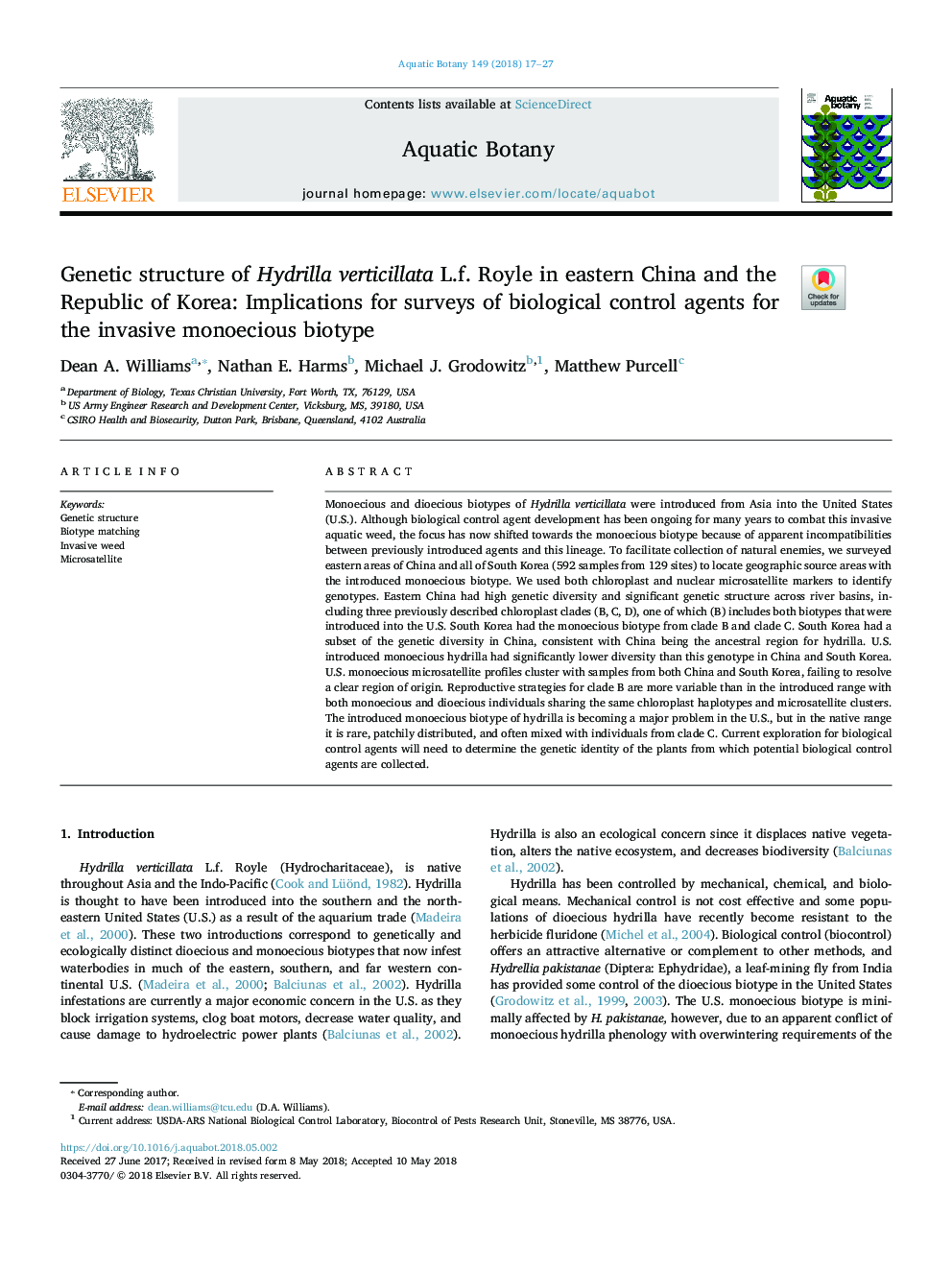| کد مقاله | کد نشریه | سال انتشار | مقاله انگلیسی | نسخه تمام متن |
|---|---|---|---|---|
| 8883553 | 1625793 | 2018 | 11 صفحه PDF | دانلود رایگان |
عنوان انگلیسی مقاله ISI
Genetic structure of Hydrilla verticillata L.f. Royle in eastern China and the Republic of Korea: Implications for surveys of biological control agents for the invasive monoecious biotype
دانلود مقاله + سفارش ترجمه
دانلود مقاله ISI انگلیسی
رایگان برای ایرانیان
کلمات کلیدی
موضوعات مرتبط
علوم زیستی و بیوفناوری
علوم کشاورزی و بیولوژیک
علوم آبزیان
پیش نمایش صفحه اول مقاله

چکیده انگلیسی
Monoecious and dioecious biotypes of Hydrilla verticillata were introduced from Asia into the United States (U.S.). Although biological control agent development has been ongoing for many years to combat this invasive aquatic weed, the focus has now shifted towards the monoecious biotype because of apparent incompatibilities between previously introduced agents and this lineage. To facilitate collection of natural enemies, we surveyed eastern areas of China and all of South Korea (592 samples from 129 sites) to locate geographic source areas with the introduced monoecious biotype. We used both chloroplast and nuclear microsatellite markers to identify genotypes. Eastern China had high genetic diversity and significant genetic structure across river basins, including three previously described chloroplast clades (B, C, D), one of which (B) includes both biotypes that were introduced into the U.S. South Korea had the monoecious biotype from clade B and clade C. South Korea had a subset of the genetic diversity in China, consistent with China being the ancestral region for hydrilla. U.S. introduced monoecious hydrilla had significantly lower diversity than this genotype in China and South Korea. U.S. monoecious microsatellite profiles cluster with samples from both China and South Korea, failing to resolve a clear region of origin. Reproductive strategies for clade B are more variable than in the introduced range with both monoecious and dioecious individuals sharing the same chloroplast haplotypes and microsatellite clusters. The introduced monoecious biotype of hydrilla is becoming a major problem in the U.S., but in the native range it is rare, patchily distributed, and often mixed with individuals from clade C. Current exploration for biological control agents will need to determine the genetic identity of the plants from which potential biological control agents are collected.
ناشر
Database: Elsevier - ScienceDirect (ساینس دایرکت)
Journal: Aquatic Botany - Volume 149, October 2018, Pages 17-27
Journal: Aquatic Botany - Volume 149, October 2018, Pages 17-27
نویسندگان
Dean A. Williams, Nathan E. Harms, Michael J. Grodowitz, Matthew Purcell,